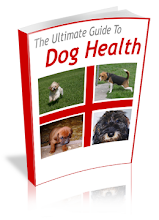
As well as the rest of other mammals, the dog requires of some 20 mineral elements in his diet. Most of them are necessary in very small quantities, forming part of catalysts like hormones and enzymes that regulates all the corporal process. In the minerals named "vestigial elements" we include: cobalt, copper, magnesium, selenium, zinc and probably chromium, molybdenum and vanadium. The magnesium is also a component of the bone. Any mix diet formed by foods of animal and vegetable origin provides these elements in enough quantities. They need sulfur only because it is an intrinsic component of the corporal protein and automatically contributes by a suitable protein diet. The important minerals are calcium and phosphorus (combine like calcium phosphate as well as sodium, and potassium (in a chloride form), and iron, and iodine. The sodium chloride and the combine iodizes will appear in many foods,although if there is some doubt, you can add a 0.5% of iodide salt. The potassium is present in all life cells as well as all the meats, cereals and vegetables. The substance in iron is adapted if the diet contains a logical amount of meat or spoils. The calcium phosphate can be given in form of whole bones since is the main mineral component, or in a mineral phosphate form if you have one. The proportion between the calcium and phosphorus is important and it will oscillate between 0,7 – 2,0 in calcium parts per 1,0 in phosphorus part. The phosphate carries out other functions in the metabolism and in the corporal tissues, they also appear in many foods. It is important that in the practice you include an approximate 3% of calcium phosphate or bone flour sterilized for the benefit of the dogs growth, gestation and nursing.
FOR MORE DETAILED INFORMATION VISIT THE COMPLETE GUIDE TO YOUR DOG NUTRITION
FOR MORE DETAILED INFORMATION VISIT THE COMPLETE GUIDE TO YOUR DOG NUTRITION




















What a shot!!!!
ReplyDelete